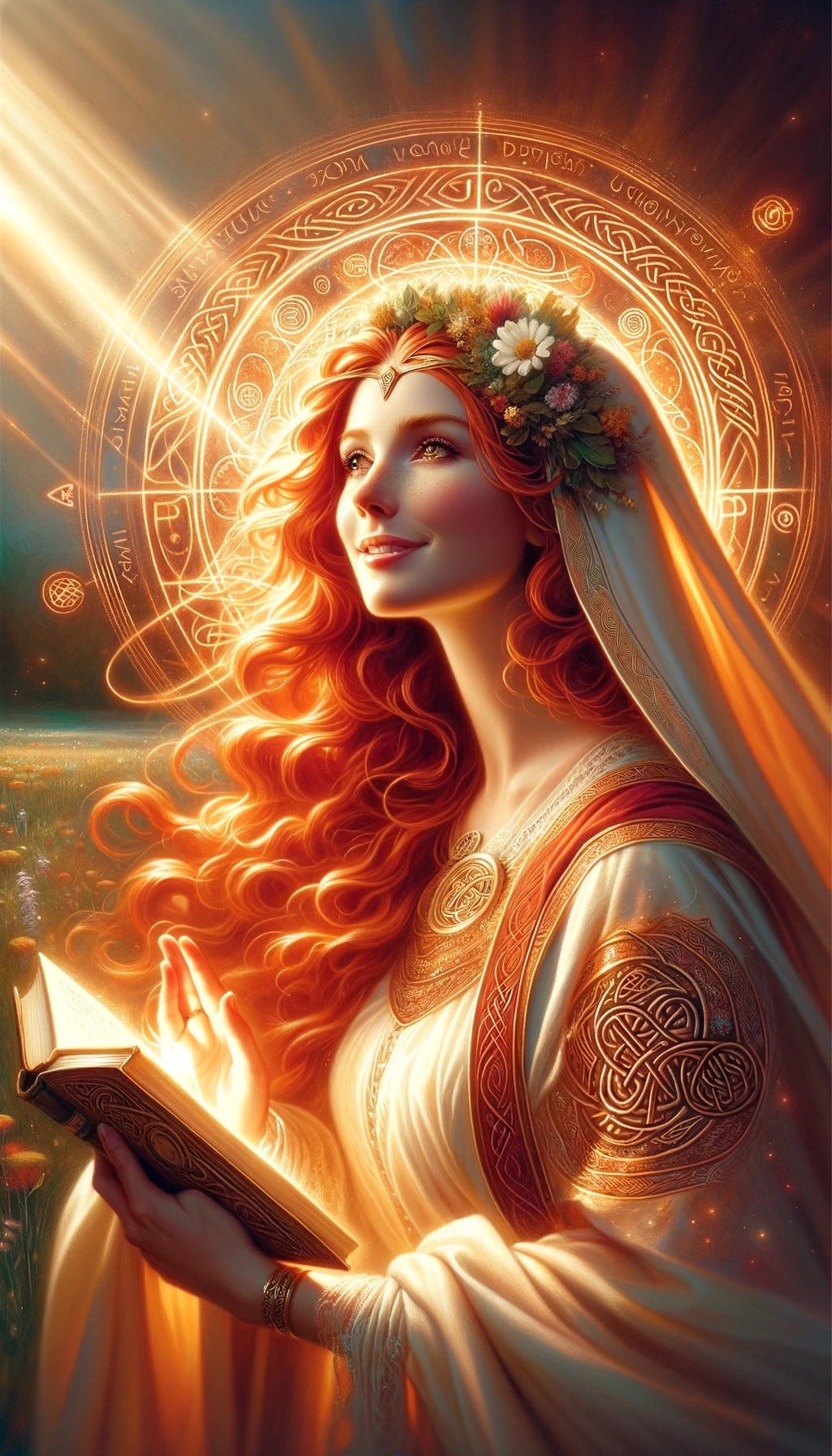Brigid, one of the most revered deities in Celtic mythology, is known for her multifaceted roles as a goddess of healing, poetry, and smithcraft. She belongs to the Tuatha Dé Danann, a supernatural race in Irish mythology. Brigid's influence extends beyond mythology into various aspects of Celtic culture and tradition, embodying the attributes of inspiration, protection, and transformation.
The Tuatha Dé Danann
The Tuatha Dé Danann, often translated as "The People of the Goddess Danu," are a mythical race of divine beings who are said to have inhabited Ireland before the arrival of the Milesians. They are portrayed as powerful and skilled in various arts and sciences, with each member possessing unique abilities. Brigid stands out among these deities due to her encompassing nature and the wide range of domains she oversees.
Brigid's Many Roles
Goddess of Healing: Brigid is often associated with healing and medicine. In ancient times, her followers believed that she possessed the power to cure ailments and wounds. Sacred wells and springs dedicated to Brigid were thought to have healing properties, and people would visit these sites seeking cures for their illnesses. Her role as a healer also extends to her nurturing aspect, where she is seen as a protector of mothers and children.
Goddess of Poetry: Brigid is also revered as the goddess of poetry, eloquence, and wisdom. She is often depicted as inspiring poets and bards, who sought her blessing for creativity and the ability to craft beautiful verses. Poetry in Celtic culture was not just an art form but a means of preserving history, laws, and lore, making Brigid’s influence pivotal in maintaining the cultural heritage of the Celts.
Goddess of Smithcraft: The domain of smithcraft and fire also falls under Brigid’s purview. She is seen as a patroness of blacksmiths, craftsmen, and those who work with fire. This aspect of Brigid symbolizes transformation and creation, reflecting the alchemical process of turning raw materials into valuable objects. Her association with fire further symbolizes purification and illumination.
Brigid's Symbols and Worship
Brigid is often associated with fire and light, which symbolize her transformative and healing powers. Her festival, Imbolc, celebrated on February 1st, marks the beginning of spring and is a time to honour her. During Imbolc, people would light candles and fires to represent the returning warmth of the sun and to invoke Brigid’s blessings.
Sacred wells dedicated to Brigid are another significant aspect of her worship. These wells were believed to have healing properties, and pilgrims would visit them to offer prayers and tokens of gratitude. The waters from these wells were used in various rituals and were considered to be blessed by the goddess.
Legacy and Christian Syncretism
With the advent of Christianity in Ireland, many aspects of Brigid’s worship were assimilated into the Christian tradition. Saint Brigid of Kildare, one of Ireland’s patron saints, is believed to be a Christianization of the goddess. The saint’s attributes and stories closely mirror those of the goddess, suggesting a deliberate merging of pagan and Christian traditions to facilitate the transition to the new religion.
Brigid’s enduring legacy as a goddess of healing, poetry, and smithcraft highlights her importance in Celtic mythology and culture. Her multifaceted nature and the breadth of her influence reflect the values and beliefs of the ancient Celts. Whether invoked for her healing touch, poetic inspiration, or transformative fire, Brigid remains a powerful and beloved figure in both historical and contemporary contexts. Her assimilation into Christian traditions as Saint Brigid further underscores her lasting impact on Irish cultural and spiritual life.





